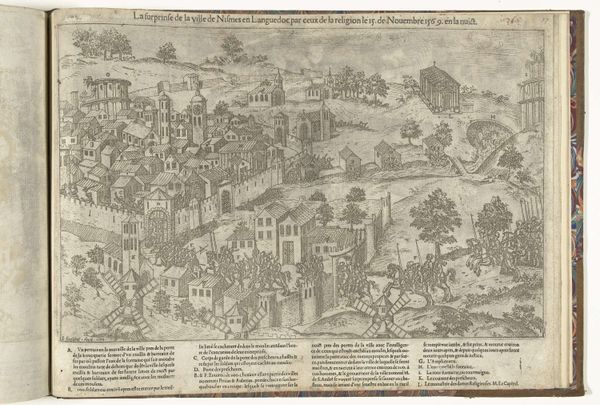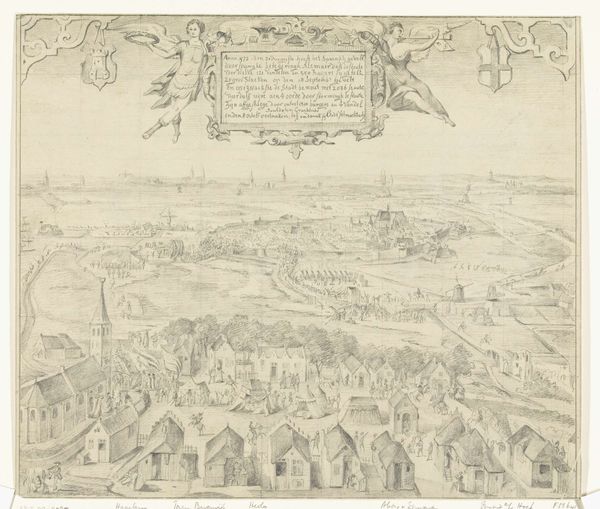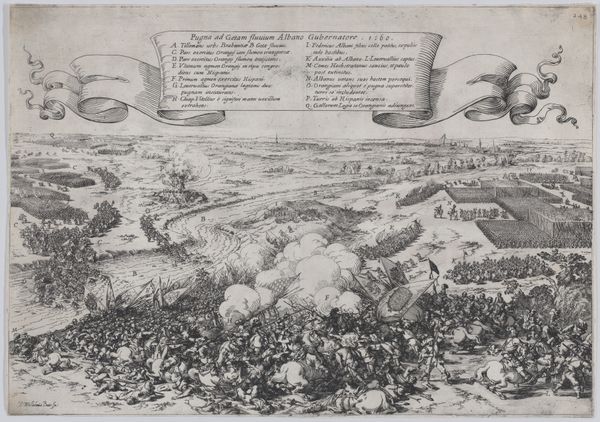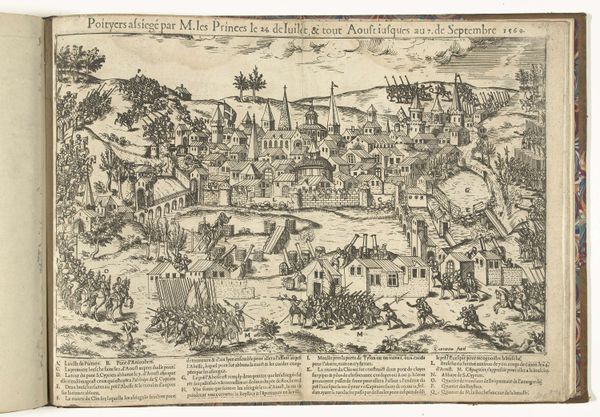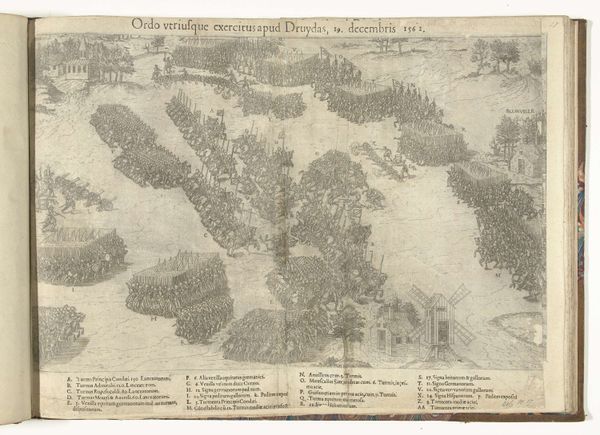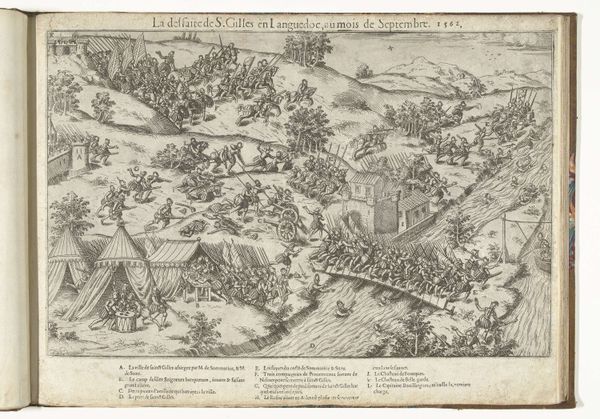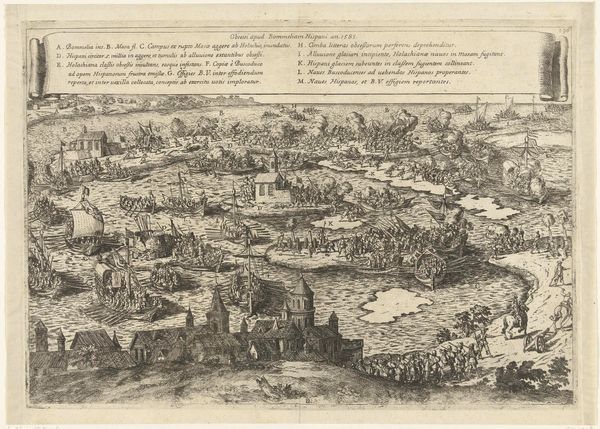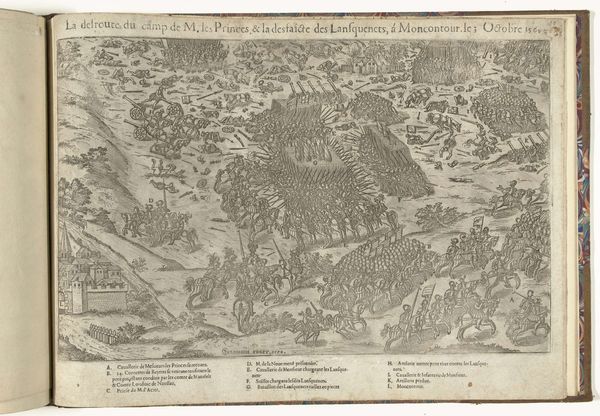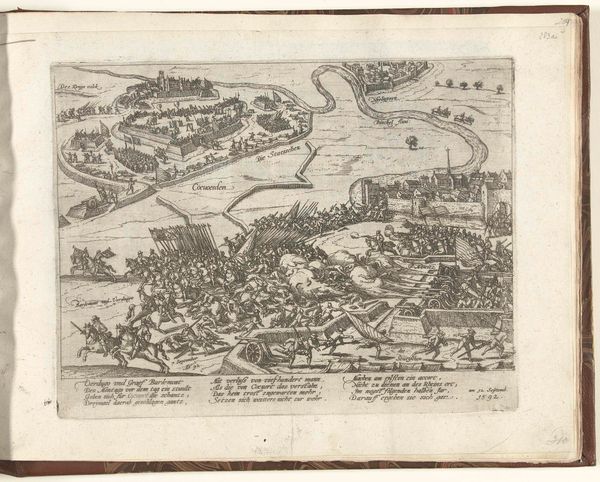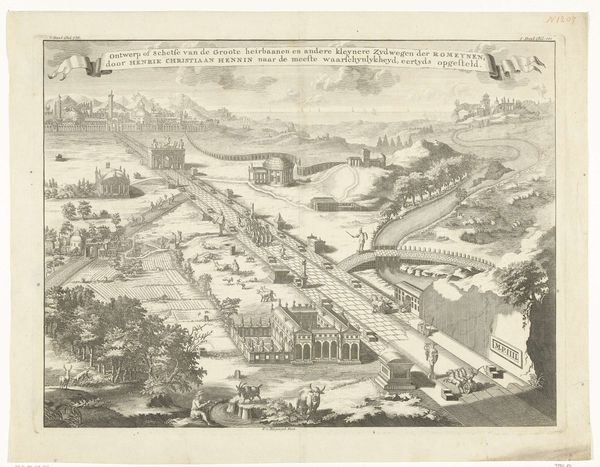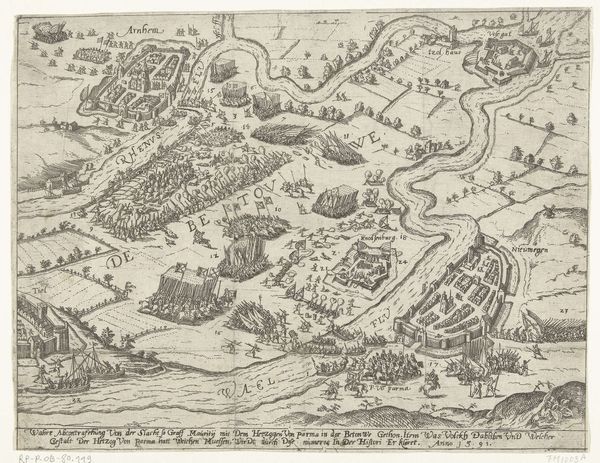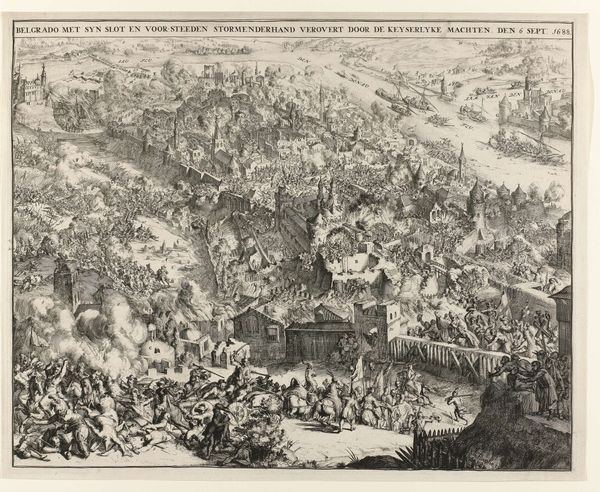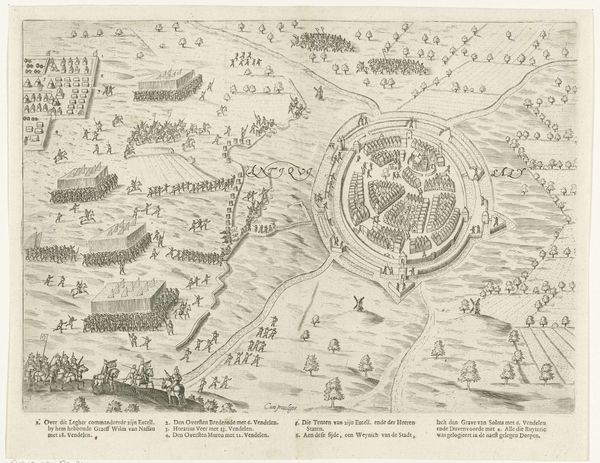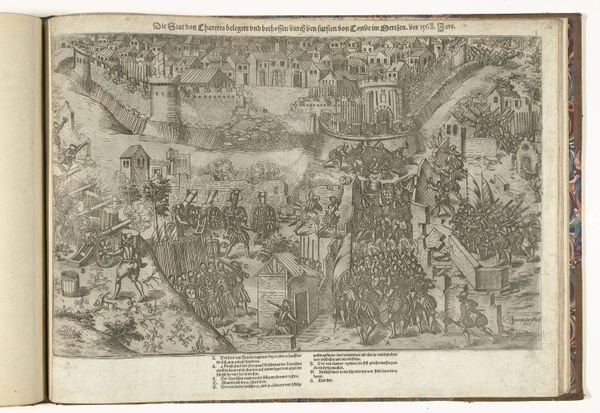
print, engraving
# print
#
landscape
#
11_renaissance
#
history-painting
#
engraving
Dimensions: height 377 mm, width 510 mm
Copyright: Rijks Museum: Open Domain
Jean Perrissin made this print, "The Siege of Orléans," in 1563 using engraving, a process of incising lines into a metal plate. Consider the labor invested in this work. Each line, each mark, was meticulously carved by hand. Perrissin's skill transforms a rigid material into a scene teeming with life, capturing the chaos and intensity of battle. Notice how the density of lines creates areas of shadow, giving depth to the composition. The print medium itself democratized images, making them accessible to a wider audience. This was essential during times of political and religious upheaval, like the French Wars of Religion depicted here. Perrissin wasn't just an artist; he was a communicator, using the craft of engraving to disseminate information and shape public opinion. By understanding the materials and making of this print, we gain a richer appreciation of its historical context and cultural significance. It's a reminder that art is not just about aesthetics; it's also about labor, technology, and the power of images in society.
Comments
No comments
Be the first to comment and join the conversation on the ultimate creative platform.
